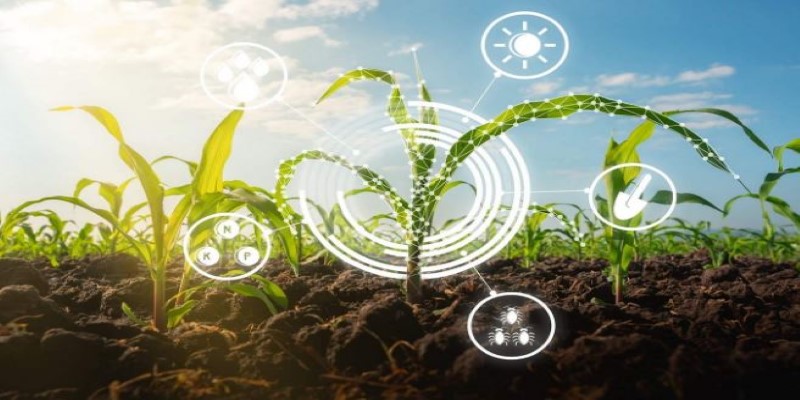Sustainable food production isn't just a buzzwordit's a necessity that touches every aspect of our lives, from the food we eat to the health of the planet. In 2024, the relationship between the environment and our food systems has never been more apparent or more critical. Extreme weather, dwindling water supplies, and deteriorating soil quality are putting traditional farming methods to the test.
As these environmental challenges grow, so does the need to rethink how we produce food. By exploring the deep connection between the environment and agriculture, we can uncover the strategies that will help us feed the world without depleting its resources.
Sustainable food production focuses on minimizing the environmental impact of agriculture while meeting the needs of a growing global population. Heres how we can tackle these impacts:
Climate change is perhaps the most pressing environmental factor affecting sustainable food production. Rising temperatures, shifting precipitation patterns, and increased frequency of extreme weather events disrupt traditional farming practices. Crops and livestock are highly sensitive to these changes. For instance, higher temperatures can stress plants, reduce yields, and alter the nutritional quality of food. Heatwaves and droughts can damage crops and deplete water resources, making farming less predictable and less productive.
To counteract these effects, farmers are adopting practices that enhance resilience. These include shifting planting dates, selecting crop varieties better suited to new conditions, and integrating technology to monitor and manage environmental stress. Additionally, reducing greenhouse gas emissions through sustainable practices can help mitigate the broader impacts of climate change on agriculture.
Soil health is fundamental to sustainable food production. Healthy soil supports crop growth, retains water, and absorbs carbon dioxide, which helps combat climate change. However, modern agricultural practices often degrade soil health through overuse of chemical fertilizers, excessive tillage, and monocropping. These practices lead to soil erosion, loss of fertility, and reduced biodiversity.

Restoring and maintaining soil health involves adopting techniques like crop rotation, cover cropping, and reduced tillage. These methods enhance soil structure, promote organic matter, and support beneficial microorganisms. By focusing on soil health, farmers can improve crop yields, reduce the need for synthetic inputs, and build resilience against environmental stresses.
Water is a critical resource for agriculture, and environmental changes increasingly threaten its availability. Efficient water use is essential for sustainable food production, as water scarcity can limit crop growth and lead to competition over this vital resource. In many regions, traditional irrigation methods are being replaced by more efficient technologies such as drip irrigation and soil moisture sensors.
Innovative practices are also being explored to address water challenges. For instance, rainwater harvesting and the use of recycled water can supplement irrigation needs. Additionally, drought-resistant crop varieties are being developed to withstand water shortages. By optimizing water use and exploring alternative sources, farmers can enhance the sustainability of their operations and reduce the environmental impact of their practices.
Biodiversity plays a crucial role in supporting sustainable food production. Diverse ecosystems provide essential services such as pollination, pest control, and nutrient cycling. Monocultures, where only a single crop is grown over large areas, can disrupt these ecosystem services and make food systems more vulnerable to pests and diseases.
Integrating biodiversity into agricultural systems helps enhance resilience and productivity. Practices like agroforestry, where trees are planted alongside crops, can provide habitat for beneficial organisms and improve soil and water management. Encouraging natural predators and planting diverse crops can also support ecosystem functions and reduce reliance on chemical inputs.
Sustainable food production affects the environment and has a profound impact on local communities. By prioritizing sustainable practices, communities can enjoy multiple benefits, including improved health, economic stability, and stronger local ecosystems.
Local food systems that rely on sustainable methods often produce fresher, healthier foods with fewer chemicals, benefiting consumers' health. Moreover, these practices can create jobs and support local economies, as small-scale farmers and local businesses become integral to the food supply chain. Community-supported agriculture (CSA) programs and farmers' markets allow consumers to connect directly with food producers, fostering a sense of community and promoting local economic resilience.
Advancements in technology are transforming sustainable food production. Precision agriculture, for example, uses data and technology to optimize farming practices. Sensors, drones, and satellite imagery provide real-time information on soil conditions, crop health, and weather patterns. This data helps farmers make informed decisions, reducing waste and improving efficiency.

Genetic engineering and biotechnology are also helping to create more resilient and productive crops. Researchers are developing varieties that are better suited to changing environmental conditions and have improved resistance to pests and diseases. While these technologies offer promising solutions, they also raise questions about environmental impacts and ethical considerations, highlighting the need for careful evaluation and regulation.
Government policies and education are critical in promoting sustainable food production. Policies that support research, provide incentives for sustainable practices, and enforce environmental regulations help guide the agricultural sector toward more sustainable practices. Education programs that raise awareness about environmental issues and offer training in sustainable methods empower farmers to adopt new practices and technologies.
By fostering collaboration between governments, researchers, and farmers, we can create an environment that supports sustainable food production and addresses the challenges posed by environmental changes.
The environment significantly influences sustainable food production, and addressing these impacts requires a multifaceted approach. Climate change, soil health, water use, biodiversity, and technological advancements all influence agricultural practices.
By understanding and responding to these factors, we can work towards a more sustainable and resilient food system. As we navigate the complexities of 2024, its clear that a concerted effort to integrate environmental considerations into food production is essential for ensuring a secure and sustainable future.

By Darnell Malan/Sep 16, 2024

By Madison Evans/Sep 18, 2024

By Vicky Louisa/Aug 25, 2024

By Aldrich Acheson/Aug 25, 2024
By Mason Garvey/Sep 23, 2024

By Triston Martin/Aug 25, 2024
By Celia Shatzman/Sep 19, 2024

By Susan Kelly/Aug 25, 2024
By Gabrielle Bennett /Sep 23, 2024
By Martina Wlison/Sep 19, 2024

By Christin Shatzman/Sep 23, 2024
By Kristina Cappetta/Sep 19, 2024